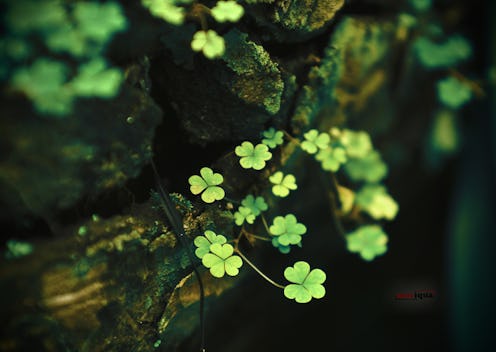Life
8 Fun Facts About St. Paddy's Day You Didn't Know

There are certain facts about St. Patrick's Day many of us don't think about twice. We have a certain picture in our heads of what the typical St. Patrick's Day celebration should look like. Getting drunk and acting silly is basically a requirement. There are shamrocks, green rivers, parades, corned beef, kissing strangers, and all the beer you can guzzle. It's a fabulous holiday of debauchery, and we've always celebrated it with the above mentioned elements, because what kind of St. Paddy's Day party would it be without green beer and a side of cabbage?
As it turns out, the leprechauns lied to us. (I suppose we shouldn't be surprised, because they are legendary when it comes to practicing mischief.) Some of our March 17 traditions are not even Irish. Some of them don't make any sense when compared to actual Irish history, and some are just downright surprising and strange. And while it doesn't need to change the way we celebrate this Emerald Isle holiday, we should at least begin the day's drunken haze (celebrate responsibly, folks!) with full knowledge of what's real and what's way off. I mean, knowledge is power, right? Here are some fun facts about St. Patrick's Day that you probably didn't know.
1. St. Patrick's Day used to be a booze-free celebration
Believe it or not, this was once a holiday celebrated without alcohol. Because it began as an extremely religious day, bars used to be closed on March 17 in Ireland. In 1970, it became a national holiday and the pubs opened their doors and resumed passing out the pints.
2. Corned beef and cabbage is an American thing
Make a plate of corned beef and cabbage for someone on St. Patrick's Day who grew up in Ireland, and watch as they say, "Um, gee..... thanks." This is because corned beef and cabbage is not a traditional dish in Ireland. It became a holiday staple when Irish immigrants came to America and found American pork and potatoes to be more expensive than corned beef and cabbage.
3. St. Patrick's Day hasn't always been associated with the color green
Green is an Irish color. It's on the flag, and with its sprawling hills, most of the country is a vibrant shade of green. But St. Patrick's Order of Chivalry in 1783 was assigned a light shade of blue, so that it could be distinguished between the Order of the Garter and the Order of the Thistle which were dark blue and green, respectively.
4. St. Patrick wasn't even Irish
He came to Ireland and did a whole mess of cool stuff, like introduce Christianity to the country — but he wasn't from Ireland. He was in fact British, and his parents were Roman. Oh, and his given name was Maewyn Succat, before he changed it to Patrick.
5. Leprechauns are kind of sexist
Scan through all the traditional Irish folk tales, and you won't find one single lady leprechaun. What gives, Ireland? Pretty sure we're just as capable of mischief and handling gold as the fellas.
6. Shamrocks are more than just lucky charms
The three leaves on the shamrock are said to serve as a metaphor for the Holy Trinity, and on the rarer four-leaf clovers, it represents the Holy Cross.
7. There were never any snakes to drive away in Ireland
Saint Patrick is known to have driven the snakes out of Ireland, but that's not exactly the case. The waters surrounding the country were too icy for snakes to migrate over, so there were zero snakes to drive away in the first place.
8. America generally parties harder than Ireland
The biggest St. Patrick's Day parades aren't even held in Ireland — they're actually in the U.S. How bananas is that? The first parade ever was held here too, in Boston, and 18 of the 20 largest St. Patrick's Day parades are held in America. NYC has the biggest of them all.